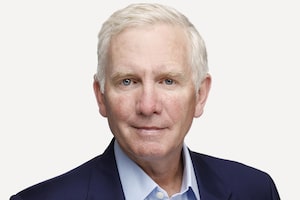As the first couple of weeks of this campaign draw to a close, there are many polls – but what can we make of them? Here's one view.
For those wondering if anything has happened so far, I'd say yes. In the weeks leading up to the campaign, the Conservatives enjoyed a healthy 10-point lead. When the hypothetical campaign turned real, the hidden advantages the Conservatives enjoyed (principally the fact that most people thought the economy was getting better, and didn't feel a need to change governments) created a surge in support for the Tories. The lead widened sharply over a few days, with one firm pegging it at a full 19 points. It looked like the Liberals were done for and a Conservative majority was well within Stephen Harper's grasp.
Since then, reported gaps have narrowed to between 7 and 10 points, and appear to be holding in that range. A healthy lead for the Conservatives, but a reflection of the fact that their campaign has had more than its share of off days.
Just as interesting as the top line horserace numbers is what Harris Decima data revealed earlier this week about feelings towards the Liberal and Conservative leaders:
» The number of people with an unfavourable view of Mr. Harper has jumped to 52 per cent, up 9 points since February, and the highest level measured since the last election campaign.
» The number of people with a favourable feeling toward Michael Ignatieff rose to 37 per cent, up 12 points since February, and the best level the Liberal Leader has seen in a year and a half. Liberal voters are now feeling more confidence in their leader, and thus more motivated to get out and vote. NDP voters may be more open to a late campaign strategic voting pitch from the Liberals, as their feelings about Mr. Harper have weakened and their impressions of Mr. Ignatieff improved.
» In short, Mr. Harper enjoyed about a 20 point advantage in favourability over Mr. Ignatieff only a couple of months ago, an advantage that is now more like five points. The millions spent on paid advertising pounding away at Mr. Ignatieff, looked to be an investment by the Tories that had been paying off. It now seems less profitable.
Nevertheless, the regional trends in voter support show the Liberals have ample reason to be concerned about this election. The Conservatives are threatening their stronghold in Ontario, and Quebec remains a wild card. The Tories enjoy a strong economy, an experienced leader, plenty of money, a big organization, and pretty motivated voters: all huge assets.
But, in the unique chemistry that exists within parties during a national election campaign, Liberal workers will be feeling charged up, despite trailing by a pretty wide margin. Unless and until the numbers start running in the opposite direction, they will believe they have created some conditions they can continue to feed off. They will also guess that their rivals in the Conservative Party are feeling frustrated and a bit on the ropes.
In the Conservative camp, while many will feel great about a 10 point lead, others will recognize that their campaign has to be better in the next two weeks than it was in the last two, or things could get interesting. To my eyes they need to be more limber and agile, able to read mood and context, adapt on the fly, and leverage their advantages more successfully. Sticking to a game plan is good, but perseverance can sometimes be overrated.
 Bruce Anderson
Bruce Anderson